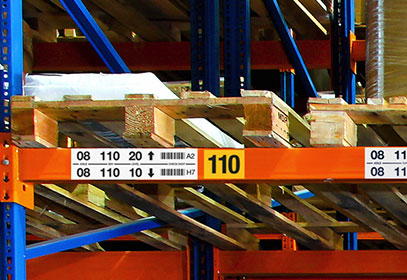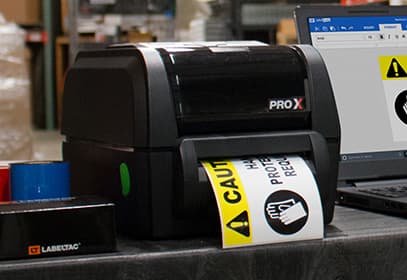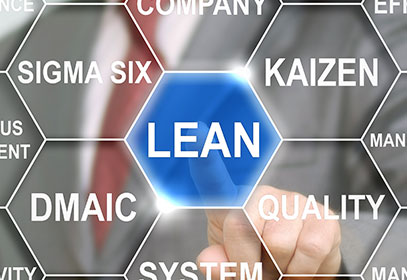Resources
Kanban Articles
5S Methodology
The 5S methodology originated in Japan and was first implemented by the Toyota Motor Corporation. The methodology was developed as a way to make just in time (JIT) manufacturing possible. This type of lean enterprise manufacturing intends to produce only the amount of a product that is needed, when it is needed. …
Understanding The 5S Methodology Implementation
This guide highlights important strategies to implement the 5S of lean. Discover the benefits, and utilize the tools to streamline the manufacturing processes. …
Advanced Kanban: Optimizing Complex Systems
Kanban offers a simple and visual approach to managing complex systems that teams from different backgrounds can easily understand and implement. …
Heijunka (Production Leveling)
Heijunka is a Japanese word that means leveling. It consists of a lean manufacturing tool that helps companies level production and thus satisfy demand and reduce waste. …
John Krafcik and the Birth of the Term Lean
Learn all about where the term Lean came from in this article! You’ll read about John Krafcik and his initial studies on Lean production methods. …
A Complete Guide to QR Codes
QR codes can be put to use in a variety of instances due to their ability to hold an astounding amount of information in comparison to other more common barcodes. …
What is Logistics Management? (Supply Chain)
Logistics management ensures that the right product is delivered to the right customer, at the right price and the right time. Learn how logistics can help you reduce costs and improve efficiency. …
Understanding the Principles of Lean Construction
When Lean techniques are incorporated into traditional methods of construction, a project is completed more efficiently. These are the main principles behind Lean Construction. …
Supply Chain Management (SCM)
A smooth and efficient supply chain ensures quality products, customer satisfaction, and a positive reputation. These are the essential components to effective supply chain management. …
Implementing Kanban
Kanban’s inventory system has transformed the way the world manufactures. This article outlines how to implement Kanban successfully and efficiently. …
Kanban Production System
Kanban Production Systems are an organizational system that produces big results by taking a series of small steps. Find out more... …
Barcode Labeling
Barcode labeling can help improve efficiency and overall accuracy when working with individual items. Learn how barcode labeling can help improve your business today. …
Critical Path Method
The critical path method (CPM) is a tool for planning and managing projects. The method can help you create and execute a project schedule, and it’s designed to maximize efficiency. …
Mass Production
Mass production is simply the manufacturing of a large number of identical or very similar products. This type of production has been around for a long time, and it has its advantages and disadvantages. …
House of Lean
The house of lean involves strategic planning and understanding to establish results of efficiency, safety, and process improvement. …
What is QCDSM?
QCDSM: Quality, Cost, Delivery, Safety and Morale. Learn how this simple lean principle can help your business. …
8 Wastes of Lean [A Guide to Manufacturing Wastes]
The 8 Wastes of Lean is a much-needed update to the what the Toyota Production System called the 7 Wastes of Lean. Fighting these wastes head on will help your facility run more smoothly and efficiently. …
Supply Chain Integration
Supply chain integration refers to the process of integrating all parts of fulfillment into one single system. Learn the steps to get your supply chain integrated into an easy-to-manage system. …
Organizational Development Process
Organizational development process is an improvement methodology designed to take known problems and implement changes in order to overcome them. …
What is a thermal printer? (direct transfer)
Thermal printers are essential to printing in an industrial setting. Learn about the two types of thermal printing to determine which one suits your facility’s needs. …
Calculating Overall Equipment Effectiveness (OEE)
Are your lean and 5S efforts making a difference? Crunch the numbers on OEE to find out! …
Statistical Process Control (SPC) in Manufacturing
Statistical Process Control also known as SPC, is a term used in quality control. Find out how you can use this continuous improvement method. …
5 Lean Principles for Process Improvement
Learning the basics about the lean process is essential when implementing continuous improvement changes. We have broken down the lean process so its easy to understand. …
Continuous Improvement (A Kaizen Model)
Facilities that focus on continuous improvement become more competitive over time and can maintain their advantages in their industry, but only if the improvement efforts are done correctly. …
Kanban Training and Research
A kanban system uses visual cues to trigger actions. Find out how it can regulate production. …
Kanban Questions and Answers
What is a Kanban Flow? The Secret Power Of Kanban
Kanban is a popular project management system that has been used for decades to increase productivity and efficiency in the workplace. It is a system based on visual cues to help manage workflow and keep track of tasks. But there is another secret power behind Kanban that many people don't know about – Kanban Flow.… …
What Is a Kanban Board? Exploring the Benefits of Visualizing Workflow
Kanban boards are an incredibly useful tool for managing projects, tasks, and workflows. A Kanban board is a visual representation of a workflow, allowing users to see exactly what tasks need to be completed, who is working on them, and when they should be finished. By clearly visualizing a project's progress, Kanban boards can help… …
Kanban Vs. Scrum: Which Methodology Is Right For You?
When it comes to project management, there are two popular methodologies that stand out: Kanban and SCRUM. Both of these tools have their own advantages and disadvantages, but ultimately the right one for you depends on the kind of project you’re working on and the goals you have set. SCRUM and Kanban are not the… …
What is e-Kanban?
Kanban is a workflow management system that has become very popular across many different industries. This system helps to define, manage, and improve various different systems within an environment. One of the key tools used within the Kanban system is the Kanban board, which is often a physical board that helps to organize different tasks… …
How does Kanban affect mass production?
Kanban is used to operate a system opposite of mass production. In mass production, production is scheduled based off a forecast of customer demand. Taking into account industry trends and historical production data, a number is calculated to represent what demand is expected to be. The schedule is then tailored to ensure enough products are… …
When does Kanban fail?
Kanban is one of the best known and most effective strategies used in the workplace today. It was first developed in the 1940’s and has become a very popular strategy in manufacturing and other facilities around the world. When reading about Kanban, it is easy to find endless articles and stories about how much it… …
Is Kanban part of Lean manufacturing?
When looking for ways to improve a manufacturing facility, you will come across a lot of information discussing both Kanban and Lean manufacturing techniques. It can become confusing to understand the difference between the two, and how they are related. In many cases, Kanban and Lean manufacturing can be used together, and even used to… …
How does Kanban affect lead time?
When using Kanban one of the biggest changes that many companies have to make is in terms of what triggers them to create additional products. Without Kanban, most facilities will create a substantial inventory of items that they will then work on selling to their customers. With Kanban, however, the strategy is to wait for… …
Who uses the Kanban system?
When talking about Kanban, most people first think about the manufacturing industry. This makes sense given the fact that it really got its start with the Toyota Motor Company, where it helped to increase the efficiency and decrease waste while making vehicles. Today, however, people in just about every industry can benefit from the advantages… …
How can Kanban help with cutting down waste?
Kanban is a very popular scheduling and organization system that is used in manufacturing and other industries. It provides a variety of different benefits, including the reduction of waste. Understanding more about how Kanban works will help to illustrate how it can help with waste reduction in your facility. Just in Time Kanban uses the just… …
Where can Kanban be applied?
Kanban was developed by Toyota Motor Company, and has been an effective scheduling system used in manufacturing plants for decades. It helps to streamline production, reduce waste, and improve the success of a company when it is implemented. While it is best known for its use in the manufacturing industry, it has been getting quite… …
How can I use Kanban in project management?
Project management can be a very difficult job regardless of what industry you are in. There are estimates that as many as 70% of projects fail to accomplish all their stated goals, which costs businesses billions of dollars each year. Finding better ways to manage projects is important for employees and businesses of all types. A… …
How do I implement Kanban?
By now you have read a lot about the theories behind Kanban, the benefits Kanban can provide, and much more. If you’re ready to get started with bringing the concepts of this system to a reality in your facility, you will need to know how to implement Kanban. This brief guide will outline what you… …
How does a Kanban system operate?
Most people in the manufacturing (and many other) industries have heard of Kanban and are likely curious to see if it could benefit their facility. Taking the time to learn more about this methodology, and properly implement it into your facility, can help to reduce waste, increase efficiency, streamline the workflow process, and much more.… …
How is Kanban used in production control?
One of the biggest types of waste for many companies is producing to much of a particular product. When this is done, the company will need to either store all the products in a warehouse until they can be sold, sell them at a significant discount (or even a loss), or simply put them in… …
How does the Kanban system help manage workflow?
The Kanban system is well-known for being able to help increase efficiency and ensure the workflow of a production line is properly managed. Understanding how this is done can help to ensure your facility has properly implemented Kanban, and is getting as much out of it as possible. Using a Pull System Many manufacturers use a push-based… …
How is Kanban different from SCRUM?
Kanban and SCRUM are two very popular systems that many facilities are adopting to try to facilitate improvement in their production or other areas of operation. While both have many benefits associated with them, and even many similarities in terms of the goals that they work to accomplish, there are also some key differences that… …
Where can Kanban be used?
Since it originally got its start in the 1940’s, the Kanban strategy has been adopted by thousands of different facilities and companies around the world. It is a proven strategy for increasing efficiency, eliminating waste, and generally improving the way things are done within a facility. Many more businesses think about using the Kanban concepts,… …
What are Kanban bins?
One of the most important things about the Kanban system is making sure that you don’t have too many parts for a given production process. Minimizing the parts on hand helps to keep things running efficiently, avoids having parts sitting unused for extended periods of time, and generally reduces waste. If done improperly, however, this can… …
What are the principles of Kanban?
The Kanban system got its start back in the 1940’s when Toyota Motor Company began their efforts to better match their inventory with the customer demand. This ‘just-in-time’ approach was accomplished using visual systems, working with suppliers, and much more. The term Kanban means ‘signboard’ or ‘visual signal’ in Japanese and has shown to be… …
What is a Kanban board?
Kanban is a system that has been used since the 1940’s when Taiichi Ohno helped innovate Toyota Motor Company’s manufacturing process. Kanban concepts help to reduce waste, increase productivity, and streamline the way things can be done in any workplace. The Kanban board is one type of tool that can help to visualize all of… …
What are Kanban cards and how do they work?
The Kanban manufacturing process relies on cards to help ensure the necessary parts and other items are there as they are needed during the production process. Cards can come in a variety of different forms based on the setup that a particular workplace is using. Understanding what Kanban cards are, and how they work, will… …
Who developed Kanban?
Kanban got its origins from Taiichi Ohno, who was a Japanese engineer and businessman. He is widely considered the father of the Toyota Production System, which is the system that Kanban is based from. This is also known as Lean Manufacturing, especially in the United States. He developed the Kanban system to help improve efficiency… …
What is Kanban?
Kanban is a system that is used in Lean manufacturing as well as just-in-time (JIT) manufacturing. It was developed by the Toyota Motor Company, and the word itself means signboard or billboard in Japanese. The intent of a Kanban system is to help improve efficiency to help benefit the production of whatever is being produced… …
















![8 Wastes of Lean [A Guide to Manufacturing Wastes]](https://www.creativesafetysupply.com/content/images/articles/8-wastes-th.jpg)










